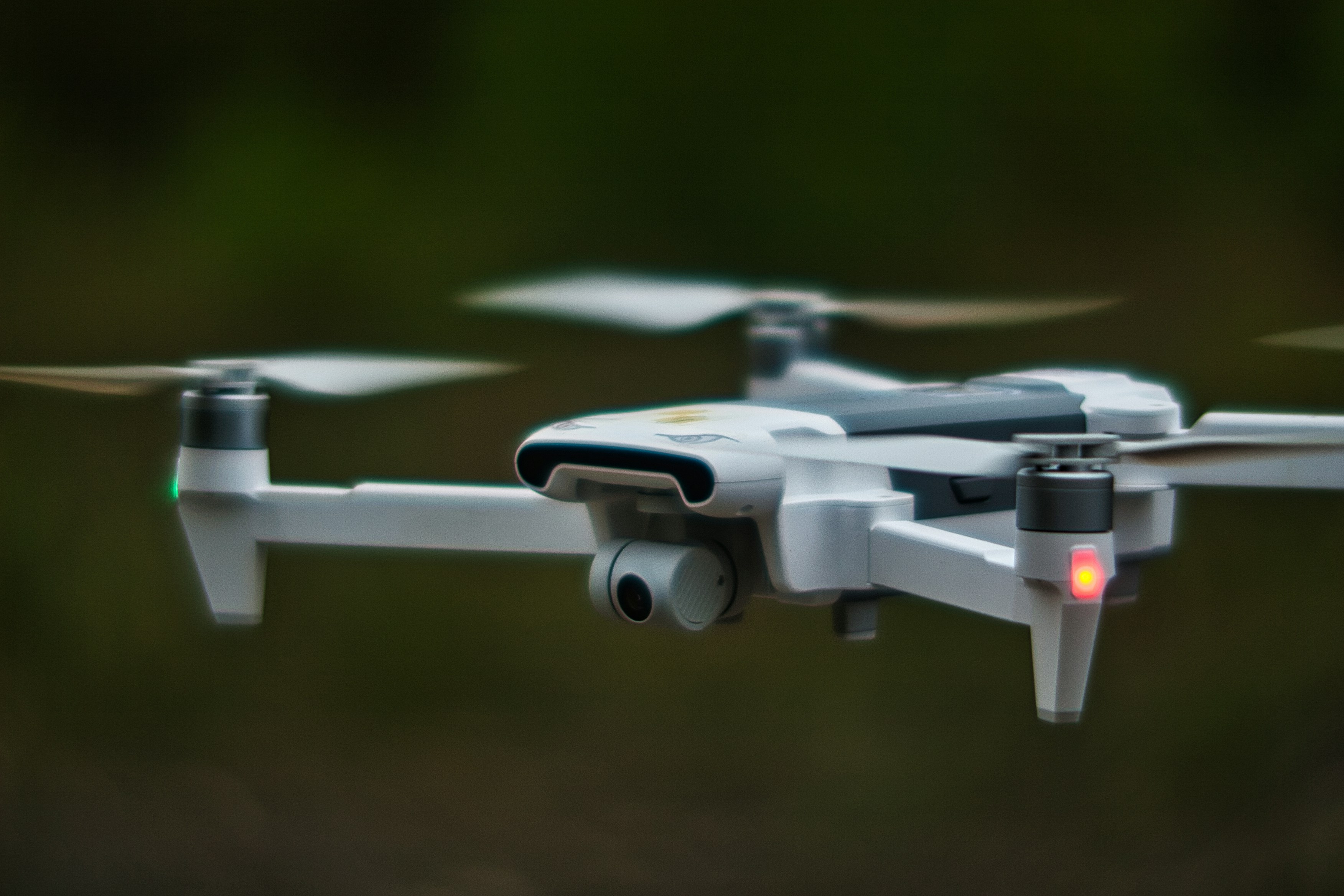
Which UAV / Drone Career Path Suits You Best?
Chart Your Future in the Sky with This Drone-Focused Quiz
The UAV (Unmanned Aerial Vehicle) sector is soaring, impacting industries from agriculture, construction, and logistics to surveillance, cinematography, and emergency response. As innovation progresses—from drone swarms to autonomous navigation—new opportunities abound for professionals skilled in hardware design, software engineering, piloting, data analysis, and more. This quiz will help you discover which UAV / drone career path aligns best with your abilities and aspirations.
How the Quiz Works
Answer Each Question: You’ll find 10 questions below, each with multiple-choice answers (A–H). Pick the option that reflects your interests or experience.
Track Your Answers: Write down the letter(s) you select.
Score by Role: Each letter corresponds to a UAV career path (A through H). Tally up how often each letter appears in your responses.
Read Your Result: Jump to the “Results Section” for an overview of each role, core skill requirements, and recommended next steps.
Share on LinkedIn: Once finished, post your outcome on UAV / Drone Jobs on LinkedIn. Encourage peers to find their ideal drone sector niche, too!
Question-to-Role Key
We’ve highlighted eight primary UAV career paths in this quiz:
A: Drone Pilot / Operator
B: UAV Hardware Engineer
C: Flight Control & Autonomy Specialist
D: Payload & Sensor Integration Expert
E: Aerial Data Analyst
F: Drone Software Developer
G: Regulatory & Compliance Officer
H: UAV Product / Project Manager
(Some questions may have multiple letters if you identify with more than one answer—choose the one you resonate with most, or note both if you truly can’t decide.)
The Quiz
1. What aspect of drone technology fascinates you the most?
A. Flying and navigating drones—testing manoeuvres, mastering manual or semi-autonomous flight.
B. Designing and building the physical components—motors, frames, propellers, and power systems.
C. Developing autopilot algorithms, collision avoidance, or real-time path planning.
D. Equipping drones with sensors or specialised payloads—cameras, LiDAR, thermal imagers—to capture mission-critical data.
E. Processing and interpreting the images, videos, or sensor data drones collect—transforming raw data into actionable insights.
F. Coding and debugging drone firmware, flight control software, or related desktop/mobile apps.
G. Ensuring flight operations comply with aviation laws, safety standards, and local or international regulations.
H. Managing the entire product lifecycle—defining features, coordinating development, and guiding drones from concept to market.
2. Which scenario would bring you the most satisfaction at work?
A. Executing a perfect flight mission—navigating tight spaces or challenging weather conditions, then landing smoothly. (A)
B. Increasing flight endurance by reengineering the drone’s structural design or battery systems. (B)
C. Improving an autonomous navigation algorithm so the drone can safely manoeuvre around obstacles. (C)
D. Calibrating a sophisticated payload—like a multispectral camera—to gather high-fidelity data in real-time. (D)
E. Analysing aerial imagery for crop health, infrastructure inspection, or security, then reporting findings to stakeholders. (E)
F. Optimising flight firmware to reduce latency, boost stability, or add new features requested by pilots. (F)
G. Drafting flight operation manuals, securing permits, or updating compliance checklists to meet aviation authorities’ requirements. (G)
H. Coordinating cross-functional teams, hitting milestones on time, and launching a new drone platform to the market. (H)
3. Which background or skill set best describes you?
A. You’re a certified drone pilot or have extensive RC piloting experience, comfortable with controls and flight scenarios.
B. You’ve studied mechanical/electrical engineering or robotics, focusing on hardware design, prototyping, or testing.
C. You have a strong computer science or robotics foundation—keen on algorithms, control theory, or embedded systems.
D. You’ve delved into sensor technologies (cameras, LiDAR, radar) and know how to integrate them with UAV platforms.
E. You come from GIS, data science, or imaging analytics—well-versed in processing data from airborne sensors.
F. You have software development expertise—C++, Python, or microcontroller programming—focusing on real-time systems.
G. You’re familiar with aviation regulations, risk assessments, and compliance strategies—maybe from a legal or aviation background.
H. You bring product management or project management experience, leading tech teams and bridging business goals with engineering.
4. In a UAV team project, which role do you gravitate toward?
A. The flight demo lead—planning flight paths, verifying safety protocols, and showcasing manoeuvrability. (A)
B. The hardware lead—choosing materials, ensuring motor thrust ratios, optimising weight distribution. (B)
C. The autonomy expert—coding or tweaking the drone’s flight controller for stable, automatic flight. (C)
D. The payload/sensor guru—selecting the right cameras or instruments, handling calibration and data flow. (D)
E. The data analytics lead—cleaning imagery, building models from sensor output, or creating dashboards with mapped results. (E)
F. The software developer—integrating the flight stack, building ground station apps, or testing communication protocols. (F)
G. The compliance officer—liaising with civil aviation authorities, ensuring flight plans adhere to laws, writing risk assessments. (G)
H. The manager—organising deliverables, budgets, and timelines, mediating between pilot requests and engineering constraints. (H)
5. Which tool or concept excites you the most?
A. Advanced flight controllers and remote pilot interfaces (e.g., DJI-style controllers, FPV headsets).
B. CAD software for designing drone frames, or 3D printers to prototype parts.
C. Autonomy libraries (ROS, PX4, ArduPilot) that handle waypoint navigation, SLAM (simultaneous localisation and mapping).
D. Sensor suites (thermal, LiDAR, hyperspectral) and custom gimbal integrations for stabilising heavy payloads.
E. Data processing pipelines—Pix4D, Agisoft Metashape, or custom machine learning scripts—for aerial imagery.
F. Embedded systems programming, real-time OS, or mobile apps that interface with UAV flight stacks.
G. Aviation regulation guidelines (EASA, CAA, FAA) or frameworks for safe BVLOS (beyond visual line of sight) operations.
H. Agile product management boards, Gantt charts, and market research data shaping the next big drone solution.
6. What’s your favourite part of a challenging UAV project?
A. Flying test missions in new conditions—night flights, high-wind scenarios, or multi-drone collaborations. (A)
B. Diagnosing hardware failures or implementing creative mechanical tweaks for better aerodynamics. (B)
C. Debugging flight anomalies in autonomy code, refining control loops, or testing new pathfinding algorithms. (C)
D. Tuning sensor parameters, ensuring payload data is aligned with real-world coordinates and minimal drift. (D)
E. Transforming large data sets into meaningful insights—like topographical maps, 3D models, or heat maps. (E)
F. Developing or improving an app that seamlessly displays flight telemetry or streaming video to operators. (F)
G. Conducting safety audits, approving flight checklists, or working with legal teams to ensure compliance expansions. (G)
H. Aligning diverse stakeholders (pilots, engineers, clients) on project scope, schedule, and success metrics. (H)
7. Imagine you have a free afternoon. How would you spend it in the UAV domain?
A. Practising advanced flight manoeuvres, maybe racing drones or perfecting cinematic shots. (A)
B. Experimenting with a new drone frame design, pushing for lighter materials or modular attachments. (B)
C. Tweaking and simulating autopilot code in Gazebo or a custom environment, exploring advanced autonomy. (C)
D. Setting up a test rig to compare sensor outputs—like a thermal camera vs. multispectral—for a use-case study. (D)
E. Testing out data-visualisation software—building 3D reconstructions, or training an AI model on drone-captured imagery. (E)
F. Creating or optimising a UAV mobile app, ensuring user-friendly interfaces and stable connectivity. (F)
G. Reading up on the latest BVLOS operational frameworks or case rulings from aviation authorities, updating compliance guides. (G)
H. Revisiting product roadmaps, assessing market feedback, and brainstorming new features or partnerships. (H)
8. Which statement best describes your career ambition in the UAV industry?
A. “I want to become a top drone operator—planning missions, capturing flawless aerial footage, and training others.” (A)
B. “I love creating the perfect flying machine—tinkering with hardware to maximise performance and durability.” (B)
C. “I’m drawn to autonomous flight—coding the intelligence that lets drones fly with minimal human input.” (C)
D. “Integrating sensors and payloads to solve industry problems is my passion—pushing the boundaries of data capture.” (D)
E. “Transforming airborne data into valuable insights or AI-driven analytics excites me most.” (E)
F. “I see myself as the software architect—crafting drone firmware, ground station apps, or cloud backends for UAV fleets.” (F)
G. “I want to ensure UAVs operate safely and legally—navigating regulations and building robust compliance frameworks.” (G)
H. “Leading cross-functional teams and delivering innovative drone solutions to the market is where I thrive.” (H)
9. In a high-pressure setting (e.g., a tight deadline drone deployment), how do you respond?
A. Calmly run through flight checklists, communicate with ground support, ensure mission success with minimal risk. (A)
B. Double-check hardware components—battery health, motor alignment, or replaced parts—solving mechanical issues swiftly. (B)
C. Debug code or revert to a stable firmware version, diagnosing the root cause of any control anomalies. (C)
D. Verify sensor calibrations, re-check data pipelines, or swiftly swap payloads if malfunctions arise. (D)
E. Rapidly process captured data—cleaning, georeferencing, or building an immediate analytical report under time pressure. (E)
F. Implement quick fixes in the flight app or ground station software—coordinating with testers to confirm stability. (F)
G. Revisit flight plans, adjust safety buffers, and confirm legal constraints—filing any last-minute notices to authorities. (G)
H. Align the team, reshuffle tasks, update clients on progress, and maintain a results-driven atmosphere. (H)
10. What excites you most about the future of UAVs?
A. The possibility of fully autonomous drone fleets delivering goods, patrolling areas, or assisting in emergencies. (A)
B. Evolving drone airframe designs—lighter, more efficient, possibly solar-powered or using hydrogen fuel cells. (B)
C. Advanced autonomy—drones that can dynamically adapt flight paths using real-time machine learning. (C)
D. Next-generation sensors (hyperspectral, 5G connectivity) opening up new applications in precision agriculture, AR/VR, or climate research. (D)
E. Transforming massive aerial data into valuable outputs— from real-time 3D maps to AI-driven analytics. (E)
F. Connected drone platforms that integrate with IoT devices, enabling swarm operations or seamless software updates. (F)
G. Regulatory frameworks allowing safe, large-scale BVLOS and urban air mobility while minimising risk. (G)
H. Seeing UAV solutions become mainstream across industries, leading to new markets, services, and job creation. (H)
Scoring Your Quiz
Count How Many Times Each Letter Appears: For each question, tally your chosen letters.
Identify Your Top One or Two Letters: These point you to the UAV roles most in sync with your interests and aptitudes.
Read the Results: Head to the “Results Section” matching your highest letter(s) to see recommended pathways.
Result Sections: Your Potential UAV / Drone Roles
A: Drone Pilot / Operator
Overview:Drone Pilots/Operators plan and execute flight missions—capturing aerial footage, conducting surveys, or transporting payloads. They’re responsible for real-time flight decisions, safety protocols, and maintaining strong piloting skills.
Core Skills & Interests:
UAV flight certification and RC piloting experience
Understanding of flight dynamics, weather considerations, and mission planning
Strong adherence to safety regulations and checklists
Potential camera or cinematography skills if capturing footage
Next Steps:
Refine flight skills, pursue advanced UAV certifications, build a flight portfolio.
Seek Drone Pilot roles on www.uavjobs.co.uk emphasising your piloting record, flight hours, and mission specialties.
B: UAV Hardware Engineer
Overview:UAV Hardware Engineers design and optimise drone frames, propulsion systems, and power modules. They focus on maximising stability, flight duration, and load capacity while minimising weight and cost.
Core Skills & Interests:
Mechanical/electrical engineering background
Familiarity with CAD, aerodynamics, materials science, and prototyping tools
Knowledge of battery tech, motor specs, and mechanical stress handling
Collaborative mindset, often working alongside software, electronics, and pilot teams
Next Steps:
Deepen your understanding of structural design, thermal management, and advanced components.
Apply for Hardware Engineer roles at www.uavjobs.co.uk, highlighting any prior drone or robotics hardware projects.
C: Flight Control & Autonomy Specialist
Overview:Flight Control & Autonomy Specialists develop algorithms that guide UAVs autonomously—covering path planning, obstacle avoidance, and stable flight in dynamic environments.
Core Skills & Interests:
Strong computer science or robotics foundation, plus control theory knowledge
Experience with ROS, PX4/ArduPilot, SLAM, sensor fusion, or machine learning for navigation
Skilled at C++/Python embedded programming and real-time systems
Analytical mindset for debugging advanced flight logs, refining autonomy loops
Next Steps:
Enhance your control algorithms, simulation tool usage, and knowledge of sensor integration.
Look for Autonomy roles on www.uavjobs.co.uk, showcasing code examples or research in self-flying systems.
D: Payload & Sensor Integration Expert
Overview:Payload & Sensor Integration Experts focus on adding specialised equipment (cameras, LiDAR, thermal sensors) to drones for data collection. They ensure precise calibration, communication protocols, and minimal interference with flight mechanics.
Core Skills & Interests:
Understanding of sensor technologies (optical, IR, radar, etc.) and data interfaces
Mechanical design for mounting, balancing payloads without disrupting flight
Calibration procedures, data alignment, and real-time data streaming
Possibly domain knowledge in remote sensing, surveying, or photography
Next Steps:
Build experience in sensor networks, camera control, data synchronisation, and gimbal stabilisation.
Pursue Sensor Integration roles on www.uavjobs.co.uk, demonstrating past sensor-based UAV projects or relevant research.
E: Aerial Data Analyst
Overview:Aerial Data Analysts transform raw imagery or sensor readings into actionable insights—producing orthomosaics, 3D models, or AI-driven analytics for industries like agriculture, construction, or environmental monitoring.
Core Skills & Interests:
Proficiency with GIS tools (ArcGIS, QGIS), photogrammetry platforms (Pix4D, Metashape), or ML frameworks
Skilled in data cleaning, geospatial processing, and advanced visualisations
Domain knowledge in relevant areas (crop management, infrastructure inspection, security)
Communication prowess to present findings clearly to stakeholders
Next Steps:
Refine geospatial analysis, data science, and remote sensing knowledge.
Search Aerial Data roles at www.uavjobs.co.uk, highlighting GIS credentials, AI analytics, or photogrammetry experience.
F: Drone Software Developer
Overview:Drone Software Developers handle coding for UAV firmware, ground control stations, or cloud-based fleet management systems. They link hardware and algorithms to deliver reliable user-facing solutions.
Core Skills & Interests:
Experience in low-level or embedded programming (C/C++, Python)
Knowledge of real-time operating systems, comms protocols (MAVLink)
App development for ground stations, flight telemetry, or data streaming
Teamwork with hardware engineers and autonomy specialists
Next Steps:
Deepen your embedded systems knowledge, test frameworks, and user interface design for UAV apps.
Look for Software Developer positions on www.uavjobs.co.uk, emphasising any open-source contributions or UAV code samples.
G: Regulatory & Compliance Officer
Overview:Regulatory & Compliance Officers ensure UAV operations meet local and international aviation rules. They manage licences, risk assessments, flight permissions, and safety protocols.
Core Skills & Interests:
Familiarity with aviation authorities (CAA, EASA, FAA) and drone-specific regulations (e.g., flight corridors, BVLOS rules)
Attention to detail drafting operations manuals, safety cases, or compliance documentation
Aptitude for risk management, flight planning approvals, and stakeholder communication
Possibly legal or aviation background, combined with UAV domain understanding
Next Steps:
Study UAV legislation updates, emerging global standards, and acquire relevant compliance certificates.
Explore Compliance roles at www.uavjobs.co.uk, highlighting risk assessment or aviation law experience.
H: UAV Product / Project Manager
Overview:UAV Product/Project Managers coordinate drone development or deployment projects, bridging tech, marketing, and business teams. They define roadmaps, manage budgets, and guide successful product launches.
Core Skills & Interests:
Expertise in project management methodologies (agile, waterfall), budgeting, and scheduling
Understanding of UAV technology enough to discuss features with engineers and pilots
Strong communication for stakeholder alignment, user feedback collection, and go-to-market plans
Ability to balance technical feasibility with market demand and regulatory constraints
Next Steps:
Refine your leadership, product strategy, and agile practices, while bolstering knowledge of UAV fundamentals.
Seek Project Manager roles on www.uavjobs.co.uk, showcasing examples of successful cross-functional tech projects.
Share Your Results on LinkedIn
Post Your Outcome: Visit UAV / Drone Jobs on LinkedIn to share which UAV career path(s) you discovered.
Tag Your Network: Invite peers or colleagues to compare quiz outcomes—great for sparking collaborations or new ideas.
Stay Connected: Follow the LinkedIn page for job postings, industry news, and networking events in drone tech.
Next Steps: Taking Flight in the UAV Sector
Browse Relevant Roles: Head to www.uavjobs.co.uk to find a wide range of positions that match your quiz results—pilot, hardware engineer, autonomy specialist, and more.
Upskill & Experiment: Whether honing flight skills, building proof-of-concept drones, or improving data analysis, hands-on experience and continuous learning drive career growth.
Network & Collaborate: Join UAV meetups, online forums, or conferences (e.g., Commercial UAV Expo, AUVSI events) to share insights, discover job leads, and exchange feedback on projects.
Highlight Achievements: Update your CV and LinkedIn with relevant UAV projects, certifications, or engineering feats—demonstrating real expertise in your chosen niche.
Remember: The drone revolution continues to reshape how industries collect data, transport goods, and respond to emergencies. By focusing on the path that aligns with your interests and strengths—be it piloting, engineering, or data analysis—you’ll be ready to propel innovation skyward and take your career to new heights in the UAV domain.


